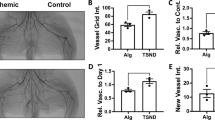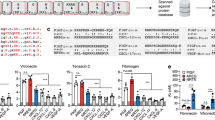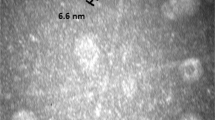Abstract
When administrated in the blood circulation, plasmid DNA (pDNA) complexed with synthetic vectors must pass through a vascular endothelium to transfect underlying tissues. Under inflammatory condition, cytokines can modify the endothelium integrity. Here, the trans-endothelial passage (TEP) of DNA complexes including polyplexes, lipoplexes and lipopolyplexes was investigated in the presence of tumor necrosis factor-α (TNF-α), interleukin-1β (IL-1β) or insulin-like growth factor-1 (IGF-1). The experiments were performed by using an in vitro model comprising a monolayer of mouse cardiac endothelial cells (MCEC) seeded on a trans-well insert and the transfection of C2C12 myoblasts cultured on the lower chamber as read out of TEP. We report that polyplexes made with a histidinylated derivative of lPEI (His-lPEI) exhibit the highest capacity (10.5 μg cm−2 h versus 0.324 μg cm−2 h) to cross TNF-α-induced inflamed endothelium model, but this positive effect is counterbalanced by the presence of IL-1β. His-lPEI polyplex TEP is also increased in the presence of IGF-1 (2.58 μg cm−2 h). TEP of lipid-based DNA complexes including lipoplexes and lipopolyplexes was lowest compared with polymer-based DNA complexes. Overall, the results indicate that under inflammation, His-lPEI polyplexes have a good profile to cross a vascular endothelium of striated muscle with low cytotoxicity and high transfection efficiency of C2C12 myoblasts. These data provide insights concerning the endothelial passage of vectors in inflammatory conditions and can serve as a basis towards in vivo studies.
This is a preview of subscription content, access via your institution
Access options
Subscribe to this journal
Receive 12 print issues and online access
$259.00 per year
only $21.58 per issue
Buy this article
- Purchase on Springer Link
- Instant access to full article PDF
Prices may be subject to local taxes which are calculated during checkout




Similar content being viewed by others
References
Jafari M, Soltani M, Naahidi S, Karunaratne DN, Chen P . Nonviral approach for targeted nucleic acid delivery. Curr Med Chem 2012; 19: 197–208.
Mintzer MA, Simanek EE . Nonviral vectors for gene delivery. Chem Rev 2009; 109: 259–302.
Ogris M, Wagner E . To be targeted: is the magic bullet concept a viable option for synthetic nucleic acid therapeutics? Hum Gene Ther 2011; 22: 799–807.
Tros de Ilarduya C, Sun Y, Duzgunes N . Gene delivery by lipoplexes and polyplexes. Eur J Pharm Sci 2010; 40: 159–170.
Gomez JP, Pichon C, Midoux P . Ability of plasmid DNA complexed with histidinylated lPEI and lPEI to cross in vitro lung and muscle vascular endothelial barriers. Gene 2013; 525: 182–190.
Maeda H, Wu J, Sawa T, Matsumura Y, Hori K . Tumor vascular permeability and the EPR effect in macromolecular therapeutics: a review. J Control Release 2000; 65: 271–284.
Danhier F . To exploit the tumor microenvironment: Since the EPR effect fails in the clinic, what is the future of nanomedicine? J Control Release 2016; 244: 108–121.
Nakamura Y, Mochida A, Choyke PL, Kobayashi H . Nanodrug delivery: is the enhanced permeability and retention effect sufficient for curing cancer? Bioconjug Chem 2016; 27: 2225–2238.
De Paepe B, Zschuntzsch J . Scanning for therapeutic targets within the cytokine network of idiopathic inflammatory myopathies. Int J Mol Sci 2015; 16: 18683–18713.
Londhe P, Guttridge DC . Inflammation induced loss of skeletal muscle. Bone 2015; 80: 131–142.
Remels AH, Gosker HR, Langen RC, Schols AM . The mechanisms of cachexia underlying muscle dysfunction in COPD. J Appl Physiol 2013; 114: 1253–1262.
Kharraz Y, Guerra J, Pessina P, Serrano AL, Munoz-Canoves P . Understanding the process of fibrosis in Duchenne muscular dystrophy. Biomed Res Int 2014; 2014: 965631.
Pessina P, Kharraz Y, Jardi M, Fukada S, Serrano AL, Perdiguero E et al. Fibrogenic cell plasticity blunts tissue regeneration and aggravates muscular dystrophy. Stem Cell Rep 2015; 4: 1046–1060.
De Paepe B, De Bleecker JL . Cytokines and chemokines as regulators of skeletal muscle inflammation: presenting the case of Duchenne muscular dystrophy. Mediators Inflamm 2013; 2013: 540370.
Evans NP, Misyak SA, Robertson JL, Bassaganya-Riera J, Grange RW . Dysregulated intracellular signaling and inflammatory gene expression during initial disease onset in Duchenne muscular dystrophy. Am J Phys Med Rehabil 2009; 88: 502–522.
Evans NP, Misyak SA, Robertson JL, Bassaganya-Riera J, Grange RW . Immune-mediated mechanisms potentially regulate the disease time-course of duchenne muscular dystrophy and provide targets for therapeutic intervention. PM R 2009; 1: 755–768.
Porter JD, Guo W, Merriam AP, Khanna S, Cheng G, Zhou X et al. Persistent over-expression of specific CC class chemokines correlates with macrophage and T-cell recruitment in mdx skeletal muscle. Neuromuscul Disord 2003; 13: 223–235.
Porter JD, Khanna S, Kaminski HJ, Rao JS, Merriam AP, Richmonds CR et al. A chronic inflammatory response dominates the skeletal muscle molecular signature in dystrophin-deficient mdx mice. Hum Mol Genet 2002; 11: 263–272.
Abdel-Megui I, Abdel-Salam E, Korraa S . Cytokines and growth factors in Duchene muscular dystrophy patients. Egypt J Med Hum Genet 2009; 9: 181–188.
Lundberg I, Brengman JM, Engel AG . Analysis of cytokine expression in muscle in inflammatory myopathies, Duchenne dystrophy, and non-weak controls. J Neuroimmunol 1995; 63: 9–16.
Okusawa S, Gelfand JA, Ikejima T, Connolly RJ, Dinarello CA . Interleukin 1 induces a shock-like state in rabbits. Synergism with tumor necrosis factor and the effect of cyclooxygenase inhibition. J Clin Invest 1988; 81: 1162–1172.
Baserga R, Sell C, Porcu P, Rubini M . The role of the IGF-I receptor in the growth and transformation of mammalian cells. Cell Prolif 1994; 27: 63–71.
Chakravarthy MV, Abraha TW, Schwartz RJ, Fiorotto ML, Booth FW . Insulin-like growth factor-I extends in vitro replicative life span of skeletal muscle satellite cells by enhancing G1/S cell cycle progression via the activation of phosphatidylinositol 3'-kinase/Akt signaling pathway. J Biol Chem 2000; 275: 35942–35952.
Lynch GS, Schertzer JD, Ryall JG . Anabolic agents for improving muscle regeneration and function after injury. Clin Exp Pharmacol Physiol 2008; 35: 852–858.
Broussard SR, McCusker RH, Novakofski JE, Strle K, Shen WH, Johnson RW et al. IL-1beta impairs insulin-like growth factor i-induced differentiation and downstream activation signals of the insulin-like growth factor i receptor in myoblasts. J Immunol 2004; 172: 7713–7720.
Grounds MD, Radley HG, Gebski BL, Bogoyevitch MA, Shavlakadze T . Implications of cross-talk between tumour necrosis factor and insulin-like growth factor-1 signalling in skeletal muscle. Clin Exp Pharmacol Physiol 2008; 35: 846–851.
Zhao Q, Yang S, Wang J, Zhou J, Xing S, Shen C et al. TNF alpha inhibits myogenic differentiation of C2C12 cells through NF-κB activation and impairment of IGF-1 signaling pathway. Biochem Biophys Res Commun 2015; 458: 790–795.
Clemmons DR . Role of IGF-I in skeletal muscle mass maintenance. Trends Endocrinol Metab 2009; 20: 349–356.
Song YH, Song JL, Delafontaine P, Godard MP . The therapeutic potential of IGF-I in skeletal muscle repair. Trends Endocrinol Metab 2013; 24: 310–319.
Vandenburgh HH, Karlisch P, Shansky J, Feldstein R . Insulin and IGF-I induce pronounced hypertrophy of skeletal myofibers in tissue culture. Am J Physiol 1991; 260: C475–C484.
Berchel M, Le Gall T, Couthon-Gourves H, Haelters JP, Montier T, Midoux P et al. Lipophosphonate/lipophosphoramidates: a family of synthetic vectors efficient for gene delivery. Biochimie 2012; 94: 33–41.
Bertrand E, Goncalves C, Billiet L, Gomez JP, Pichon C, Cheradame H et al. Histidinylated linear PEI: a new efficient non-toxic polymer for gene transfer. Chem Commun 2011; 47: 12547–12549.
Billiet L, Gomez JP, Berchel M, Jaffres PA, Le Gall T, Montier T et al. Gene transfer by chemical vectors, and endocytosis routes of polyplexes, lipoplexes and lipopolyplexes in a myoblast cell line. Biomaterials 2012; 33: 2980–2990.
Mevel M, Breuzard G, Yaouanc JJ, Clement JC, Lehn P, Pichon C et al. Synthesis and transfection activity of new cationic phosphoramidate lipids: high efficiency of an imidazolium derivative. Chembiochem 2008; 9: 1462–1471.
Mevel M, Sainlos M, Chatin B, Oudrhiri N, Hauchecorne M, Lambert O et al. Paromomycin and neomycin B derived cationic lipids: synthesis and transfection studies. J Control Release 2012; 158: 461–469.
Ko JA, Murata S, Nishida T . Up-regulation of the tight-junction protein ZO-1 by substance P and IGF-1 in A431 cells. Cell Biochem Funct 2009; 27: 388–394.
Mitsui R, Fujita-Yoshigaki J, Narita T, Matsuki-Fukushima M, Satoh K, Qi B et al. Maintenance of paracellular barrier function by insulin-like growth factor-I in submandibular gland cells. Arch Oral Biol 2010; 55: 963–969.
Wang X, Huang W, Liu G, Cai W, Millard RW, Wang Y et al. Cardiomyocytes mediate anti-angiogenesis in type 2 diabetic rats through the exosomal transfer of miR-320 into endothelial cells. J Mol Cell Cardiol 2014; 74: 139–150.
Cotran RS, Pober JS . Cytokine-endothelial interactions in inflammation, immunity, and vascular injury. J Am Soc Nephrol 1990; 1: 225–235.
Frost RA, Lang CH . Skeletal muscle cytokines: regulation by pathogen-associated molecules and catabolic hormones. Curr Opin Clin Nutr Metab Care 2005; 8: 255–263.
Tidball JG, Villalta SA . Regulatory interactions between muscle and the immune system during muscle regeneration. Am J Physiol Regul Integr Comp Physiol 2010; 298: R1173–R1187.
Cruz-Guzman OdR, Rodriguez-Cruz M, Escobar Cedillo RE . Systemic inflammation in Duchenne Muscular Dystrophy: Association with muscle function and nutritional status. Biomed Res Int 2015; 2015: 891972.
Porreca E, Guglielmi MD, Uncini A, Di Gregorio P, Angelini A, Di Febbo C et al. Haemostatic abnormalities, cardiac involvement and serum tumor necrosis factor levels in X-linked dystrophic patients. Thromb Haemost 1999; 81: 543–546.
Watanabe N . [Clinical significance of measurement of circulating tumor necrosis factor alpha]. Rinsho Byori 2001; 49: 829–833.
Stenina MA, Krivov LI, Voevodin DA, Yarygin VN . Phenotypic differences between mdx black mice and mdx albino mice. Comparison of cytokine levels in the blood. Bull Exp Biol Med 2013; 155: 376–379.
Kayacan O, Karnak D, Beder S, Gullu E, Tutkak H, Senler FC et al. Impact of TNF-alpha and IL-6 levels on development of cachexia in newly diagnosed NSCLC patients. Am J Clin Oncol 2006; 29: 328–335.
Michalak S, Wender M, Michalowska-Wender G . Cachexia—induced cerebellar degeneration: involvement of serum TNF and MCP-1 in the course of experimental neoplastic disease. Acta Neurobiol Exp 2006; 66: 113–122.
Tazaki E, Shimizu N, Tanaka R, Yoshizumi M, Kamma H, Imoto S et al. Serum cytokine profiles in patients with prostate carcinoma. Exp Ther Med 2011; 2: 887–891.
Basic VT, Jacobsen A, Sirsjo A, Abdel-Halim SM . TNF stimulation induces VHL overexpression and impairs angiogenic potential in skeletal muscle myocytes. Int J Mol Med 2014; 34: 228–236.
Fernandez-Celemin L, Pasko N, Blomart V, Thissen JP . Inhibition of muscle insulin-like growth factor I expression by tumor necrosis factor-alpha. Am J Physiol Endocrinol Metab 2002; 283: E1279–E1290.
Frost RA, Lang CH, Gelato MC . Transient exposure of human myoblasts to tumor necrosis factor-alpha inhibits serum and insulin-like growth factor-I stimulated protein synthesis. Endocrinology 1997; 138: 4153–4159.
Layne MD, Farmer SR . Tumor necrosis factor-alpha and basic fibroblast growth factor differentially inhibit the insulin-like growth factor-I induced expression of myogenin in C2C12 myoblasts. Exp Cell Res 1999; 249: 177–187.
Georgantas RW, Streicher K, Greenberg SA, Greenlees LM, Zhu W, Brohawn PZ et al. Inhibition of myogenic microRNAs 1, 133, and 206 by inflammatory cytokines links inflammation and muscle degeneration in adult inflammatory myopathies. Arthritis Rheumatol 2014; 66: 1022–1033.
Grigsby CL, Leong KW . Balancing protection and release of DNA: tools to address a bottleneck of non-viral gene delivery. J R Soc Interface 2010; 7 : S67–S82.
Matsuda S, Fujita T, Kajiya M, Kashiwai K, Takeda K, Shiba H et al. Brain-derived neurotrophic factor prevents the endothelial barrier dysfunction induced by interleukin-1beta and tumor necrosis factor-alpha. J Periodontal Res 2015; 50: 444–451.
Burke-Gaffney A, Keenan AK . Modulation of human endothelial cell permeability by combinations of the cytokines interleukin-1 alpha/beta, tumor necrosis factor-alpha and interferon-gamma. Immunopharmacology 1993; 25: 1–9.
Aveleira CA, Lin CM, Abcouwer SF, Ambrosio AF, Antonetti DA . TNF-alpha signals through PKCzeta/NF-kappaB to alter the tight junction complex and increase retinal endothelial cell permeability. Diabetes 2010; 59: 2872–2882.
Blum MS, Toninelli E, Anderson JM, Balda MS, Zhou J, O'Donnell L et al. Cytoskeletal rearrangement mediates human microvascular endothelial tight junction modulation by cytokines. Am J Physiol 1997; 273: H286–H294.
Royall JA, Berkow RL, Beckman JS, Cunningham MK, Matalon S, Freeman BA . Tumor necrosis factor and interleukin 1 alpha increase vascular endothelial permeability. Am J Physiol 1989; 257: L399–L410.
Kofler S, Nickel T, Weis M . Role of cytokines in cardiovascular diseases: a focus on endothelial responses to inflammation. Clin Sci 2005; 108: 205–213.
Zhu ZB, Makhija SK, Lu B, Wang M, Rivera AA, Preuss M et al. Transport across a polarized monolayer of Caco-2 cells by transferrin receptor-mediated adenovirus transcytosis. Virology 2004; 325: 116–128.
Hocini H, Becquart P, Bouhlal H, Chomont N, Ancuta P, Kazatchkine MD et al. Active and selective transcytosis of cell-free human immunodeficiency virus through a tight polarized monolayer of human endometrial cells. J Virol 2001; 75: 5370–5374.
Mennesson E, Erbacher P, Piller V, Kieda C, Midoux P, Pichon C . Transfection efficiency and uptake process of polyplexes in human lung endothelial cells: a comparative study in non-polarized and polarized cells. J Gene Med 2005; 7: 729–738.
Snoeys J, Lievens J, Wisse E, Jacobs F, Duimel H, Collen D et al. Species differences in transgene DNA uptake in hepatocytes after adenoviral transfer correlate with the size of endothelial fenestrae. Gene Ther 2007; 14: 604–612.
Wisse E, Jacobs F, Topal B, Frederik P, De Geest B . The size of endothelial fenestrae in human liver sinusoids: implications for hepatocyte-directed gene transfer. Gene Ther 2008; 15: 1193–1199.
Goncalves C, Ardourel MY, Decoville M, Breuzard G, Midoux P, Hartmann B et al. An optimized extended DNA kappa B site that enhances plasmid DNA nuclear import and gene expression. J Gene Med 2009; 11: 401–411.
Pigeon L, Goncalves C, Gosset D, Pichon C, Midoux P . An E3-14.7K peptide that promotes microtubules-mediated transport of plasmid DNA increases polyplexes transfection efficiency. Small 2013; 9: 3845–3851.
Fenart L, Casanova A, Dehouck B, Duhem C, Slupek S, Cecchelli R et al. Evaluation of effect of charge and lipid coating on ability of 60-nm nanoparticles to cross an in vitro model of the blood-brain barrier. J Pharmacol Exp Ther 1999; 291: 1017–1022.
Akita H, Fujiwara T, Santiwarangkool S, Hossen N, Kajimoto K, El-Sayed A et al. Transcytosis-targeting peptide: a conductor of liposomal nanoparticles through the endothelial cell barrier. Small 2015; 12: 1212–1221.
Lorenzer C, Dirin M, Winkler AM, Baumann V, Winkler J . Going beyond the liver: progress and challenges of targeted delivery of siRNA therapeutics. J Control Release 2015; 203: 1–15.
Lu W . Adsorptive-mediated brain delivery systems. Curr Pharm Biotechnol 2012; 13: 2340–2348.
Markoutsa E, Papadia K, Clemente C, Flores O, Antimisiaris SG . Anti-Abeta-MAb and dually decorated nanoliposomes: effect of Abeta1-42 peptides on interaction with hCMEC/D3 cells. Eur J Pharm Biopharm 2012; 81: 49–56.
Markoutsa E, Papadia K, Giannou AD, Spella M, Cagnotto A, Salmona M et al. Mono and dually decorated nanoliposomes for brain targeting, in vitro and in vivo studies. Pharm Res 2014; 31: 1275–1289.
Libby P, Ordovas JM, Auger KR, Robbins AH, Birinyi LK, Dinarello CA . Endotoxin and tumor necrosis factor induce interleukin-1 gene expression in adult human vascular endothelial cells. Am J Pathol 1986; 124: 179–185.
Shalaby MR, Waage A, Espevik T . Cytokine regulation of interleukin 6 production by human endothelial cells. Cell Immunol 1989; 121: 372–382.
Pelosi L, Berardinelli MG, Forcina L, Spelta E, Rizzuto E, Nicoletti C et al. Increased levels of interleukin-6 exacerbate the dystrophic phenotype in mdx mice. Hum Mol Genet 2015; 24: 6041–6053.
Langen RCJS AMW, Kelders MCJM, Wouters EFM, Janssen-Heininger YMW . Inflammatory cytokines inhibit myogenic differentiation through activation of nuclear factor-κB. FASEB J 2001; 15: 1169–1180.
Li YP, Reid MB . Effect of tumor necrosis factor-alpha on skeletal muscle metabolism. Curr Opin Rheumatol 2001; 13: 483–487.
Reay DP, Niizawa GA, Watchko JF, Daood M, Reay JC, Raggi E et al. Effect of nuclear factor kappaB inhibition on serotype 9 adeno-associated viral (AAV9) minidystrophin gene transfer to the mdx mouse. Mol Med 2012; 18: 466–476.
Holtmann H, Wallach D . Down regulation of the receptors for tumor necrosis factor by interleukin 1 and 4 beta-phorbol-12-myristate-13-acetate. J Immunol 1987; 139: 1161–1167.
Back K, Islam R, Johansson GS, Chisalita SI, Arnqvist HJ . Insulin and IGF1 receptors in human cardiac microvascular endothelial cells: metabolic, mitogenic and anti-inflammatory effects. J Endocrinol 2012; 215: 89–96.
Desigaux L, Sainlos M, Lambert O, Chevre R, Letrou-Bonneval E, Vigneron JP et al. Self-assembled lamellar complexes of siRNA with lipidic aminoglycoside derivatives promote efficient siRNA delivery and interference. Proc Natl Acad Sci USA 2007; 104: 16534–16539.
Mockey M, Bourseau E, Chandrashekhar V, Chaudhuri A, Lafosse S, Le Cam E et al. mRNA-based cancer vaccine: prevention of B16 melanoma progression and metastasis by systemic injection of MART1 mRNA histidylated lipopolyplexes. Cancer Gene Ther 2007; 14: 802–814.
Acknowledgements
We thank David Gosset (Cytometry and Cellular Imaging P@CYFIC platform CBM) for his technical assistance. This work was supported by grants from ‘Association Française contre les Myopathies’ (Strategic project 2009, no 15628AFM (AFM, Evry, France) and Vaincre La Mucoviscidose (VLM, Paris, France).
Author information
Authors and Affiliations
Corresponding author
Ethics declarations
Competing interests
The authors declare no conflict of interest.
Additional information
Supplementary Information accompanies this paper on Gene Therapy website
Supplementary information
Rights and permissions
About this article
Cite this article
Gomez, J., Gonçalves, C., Pichon, C. et al. Effect of IL-1β, TNF-α and IGF-1 on trans-endothelial passage of synthetic vectors through an in vitro vascular endothelial barrier of striated muscle. Gene Ther 24, 416–424 (2017). https://doi.org/10.1038/gt.2017.40
Received:
Revised:
Accepted:
Published:
Issue Date:
DOI: https://doi.org/10.1038/gt.2017.40
This article is cited by
-
Gene expression in immortalized versus primary isolated cardiac endothelial cells
Scientific Reports (2020)



